SecuTech Expo 2009, held in Taipei from April 22 to 24, was the largest in its 12-year history, featuring more than 700 exhibitors, 1,600 booths and 94 seminars. Recognizing the need for a platform between Asian manufacturers and global buyers, A&S hosted the first-ever Asian Manufacturer Summit during the exhibition. Six security veterans debated over how to identify the right partners with the right offerings in this panel discussion; A&S summarizes the highlights and profiles 30 Asian small giants in this feature article.
SecuTech Expo 2009, held in Taipei from April 22 to 24, was the largest in its 12-year history, featuring more than 700 exhibitors, 1,600 booths and 94 seminars. Recognizing the need for a platform between Asian manufacturers and global buyers, A&S hosted the first-ever Asian Manufacturer Summit during the exhibition. Six security veterans debated over how to identify the right partners with the right offerings in this panel discussion; A&S summarizes the highlights and profiles 30 Asian small giants in this feature article.
The panel consisted of John Shih, Editorial Director for all A&S publications; Gert van Iperen, President of Bosch Security Systems; Pramoud Rao, MD for Zicom Electronic Security Systems; Surajit Biswas, Director of Vendor and
Business Development for ADI Global Distribution; John Honovich, founder of IPVideoMarket.info ; Andreas Kupka, former MD of ABUS Security- Center (effective May 11, the new MD is Philippe Bremicker).
Topics on the table included factors for sourcing products and partner selection criteria for OEM/ODM considerations. These industry veterans detailed some benchmarks for evaluating products and manufacturing partners, and provided insights into Asian manufacturers' R&D and branding efforts.
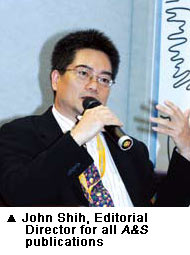 In response to a question of customers increasingly looking to strike a balance between price and performance especially during financially trying times, Rao started off the debate by saying: "The most important thing is value rather than price only. As most product lifecycles are becoming longer and longer — some to almost 10 years — we have to start creating the right position in the customer's mind. Not only do we create the right position in his mind, we help him get the right price. If I were to position myself in front of a customer in this recession, price and service would have been key and gone hand in hand."
In response to a question of customers increasingly looking to strike a balance between price and performance especially during financially trying times, Rao started off the debate by saying: "The most important thing is value rather than price only. As most product lifecycles are becoming longer and longer — some to almost 10 years — we have to start creating the right position in the customer's mind. Not only do we create the right position in his mind, we help him get the right price. If I were to position myself in front of a customer in this recession, price and service would have been key and gone hand in hand."
The others agreed. "When customers have cameras installed in the ceiling, they 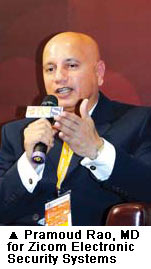 expect them to function for five to 10 years. If a service technician has to be sent in from time to time, the 'good feeling' you enjoyed from the low price at the beginning would be gone very quickly," van Iperen added. "We provide our products at competitive prices, but we do not compromise on quality. If the hard drives in your DVRs have to be swapped every two months, the extra costs would exceed the savings made earlier very soon. Customers also expect training and support, and we deliver that value."
expect them to function for five to 10 years. If a service technician has to be sent in from time to time, the 'good feeling' you enjoyed from the low price at the beginning would be gone very quickly," van Iperen added. "We provide our products at competitive prices, but we do not compromise on quality. If the hard drives in your DVRs have to be swapped every two months, the extra costs would exceed the savings made earlier very soon. Customers also expect training and support, and we deliver that value."
Biswas echoed by saying: "We buy from more than 450 brands as a distributor; a key criterion is quality. If you just sell cheap, you can't sustain for a long period of time. The reliability of products is something that smart users know and something you need to show. We have to really explain the features to a customer and the support we provide."
Identifying Good Partners
Kupka also seconded the value proposition while weighing in on niche markets and human factors. "You see the big players like Bosch, Siemens, Tyco and GE 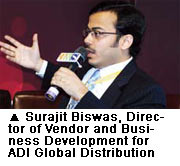 everywhere; we've learned to grow in this business without fighting these guys head on. We concentrate on niche markets and search for the right integrators, installers and electricians, while offering them good margins on small systems and solutions that the IT people can't. As for identifying good suppliers, there's a German saying, 'A bad fish starts smelling from its head.' I find out Asian manufacturers' strategy, philosophy and potential by playing golf with the big bosses — it's much quicker than the necessary ISO verifications and other due diligence." Stringent quality assurance, nevertheless, would still be carried out, as it takes dozens of years to build up a brand, "but just one to destroy it."
everywhere; we've learned to grow in this business without fighting these guys head on. We concentrate on niche markets and search for the right integrators, installers and electricians, while offering them good margins on small systems and solutions that the IT people can't. As for identifying good suppliers, there's a German saying, 'A bad fish starts smelling from its head.' I find out Asian manufacturers' strategy, philosophy and potential by playing golf with the big bosses — it's much quicker than the necessary ISO verifications and other due diligence." Stringent quality assurance, nevertheless, would still be carried out, as it takes dozens of years to build up a brand, "but just one to destroy it."
Rao then expanded on due diligence. "We identify how long the company has 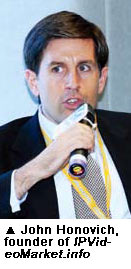 been in business; it can't be a company that just started a year ago. We also see if it's listed on the stock exchange, as corporate governance issues are taken care of. We look at the top five customers this company sells to, and see if they buy big volumes for a long time. Then we make a visit to the factory. If big guys buy from them or give OEM orders to them, we can buy from them too."
been in business; it can't be a company that just started a year ago. We also see if it's listed on the stock exchange, as corporate governance issues are taken care of. We look at the top five customers this company sells to, and see if they buy big volumes for a long time. Then we make a visit to the factory. If big guys buy from them or give OEM orders to them, we can buy from them too."
Biswas added by sharing his experience. "It's very important for a buyer to identify which product, which technology they're looking at and think about which customer sections to target. You then establish a shortlist of potential suppliers. The question is how do you select the right supplier and which product from them. You need a deeper understanding of the manufacturer before buying. You also need to know their organizational structure, philosophy, business model and investment for R&D. It's important to find out their R&D roadmap. Can they upgrade it, future-proof it to be compatible with newer models? It can be very risky, and you have to dig deeper to see if they have proper human or other resources in place. If you have a team with high energy and good communication skills, you score high."
Finding the right partners takes time, van Iperen cautioned. "We don't survey a show, find nice products and have them in our portfolio next week. It takes at least six months. We screen our partners and stay with them for at least five years. If there are quality issues, we see how they support or if they just go into 'your fault' mode. We're very critical but we enjoy good, long-term relationships with both our partners and customers."
OEM or Own Brand?
Another heavily debated topic centered on whether OEM equals white labeling. 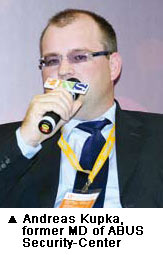 "I'm very skeptical about premium pricing versus value," said Honovich, as he believes an opportunity in this financial crisis is to cut out bigger players and save 20 to 30 percent by buying from up-and coming Asian manufacturers.
"I'm very skeptical about premium pricing versus value," said Honovich, as he believes an opportunity in this financial crisis is to cut out bigger players and save 20 to 30 percent by buying from up-and coming Asian manufacturers.
"If you just buy a product, put a label on it and then double the price, it's not a sustaining business model because customers will find out very soon," van Iperen responded. "You must test diligently and provide the warranty, training and total support; then, you have the value of the brand. Let's be very clear — do not underestimate value."
The discussion then turned to whether Asian manufacturers have the branding or marketing power. "Ten years ago, most Taiwanese and Korean manufacturers regarded themselves as OEMs or ODMs. Many companies have since changed strategies and done well," said Kupka. DynaColor, Vivotek and EverFocus are building up their brands through good marketing and advertising, so it's possible. It's a question of continuous marketing: If you want to build a brand, you need to build brand awareness, so being continuous is the most important part. You need to keep your promise to your customers all the time — it doesn't matter if you are in Asia."
Rao could not agree more. "Marketing is a battle of perception. Nothing happens overnight — you have to invest money and time in a baby to make it look beautiful."
Honovich, however, does not think marketing is expensive. "In 10 years, at least 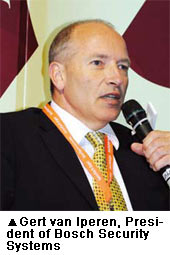 one or two of you in this room will be billionaires like Bosch and Sony. Asians have built their own brands for super cheap; Google has built an incredible brand in five or 10 years. The biggest potential is grow your own brand and spread it globally."
one or two of you in this room will be billionaires like Bosch and Sony. Asians have built their own brands for super cheap; Google has built an incredible brand in five or 10 years. The biggest potential is grow your own brand and spread it globally."
Proficiency in the technology is also an issue, van Iperen added. "There's more to being successful. You have to have enough innovation; you have to bring something special to the market. People also expect local support for the long term." And this was seconded by Biswas. "It's important for an organization to be one of the first in the market, to have some exclusive advantages or technological edge."
So who fits the bill of being the next wave of up-and-coming Asian manufacturers? A&S talked to a great number of exhibitors at this year's SecuTech and presents some of the elites — Asian Small Giants — as following!
ACTIONTOP ELECTRONICS (SHENZHEN) CO., LTD
Argus
AVerMedia Information
BlueStar Technology Co.,Ltd.
CAMDEOR TECHNOLOGY CO., LTD.
Chateau Technical
Deeplet Technology
Etrovision Technology
GKB Security
iCatch
Instek Digital
Leading Optics Co., Ltd
Merit Lilin
OB Telecom Electronic Technology Co., Ltd.
QNAP Systems
Servntec Co., Ltd.
TBT
Tiandy Digital Technology Co., Ltd.
Tibet System
Tongwei Digital Technology co.,LTD(TVT Digital)
Video Security, Inc.
WONWOO ENGINEERING CO., LTD
Zero One Technology Co., Ltd.
Bluecard Software Technology Co. Ltd.
Hundure Technology
NITGEN
Seoul Commtech Co., Ltd.
Suprema
*Company names/profiles are arranged in an alphabetical order — video surveillance first, then access control.*